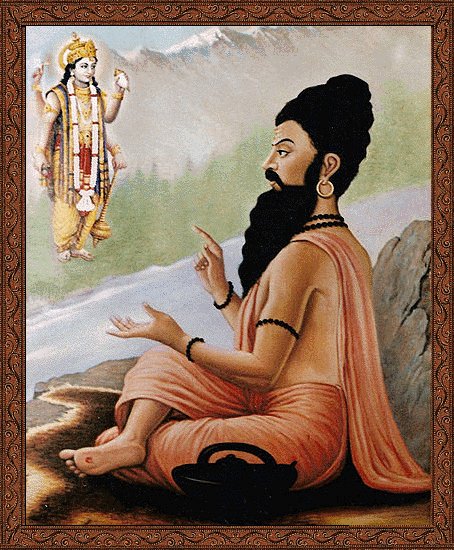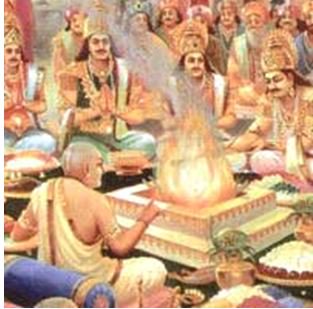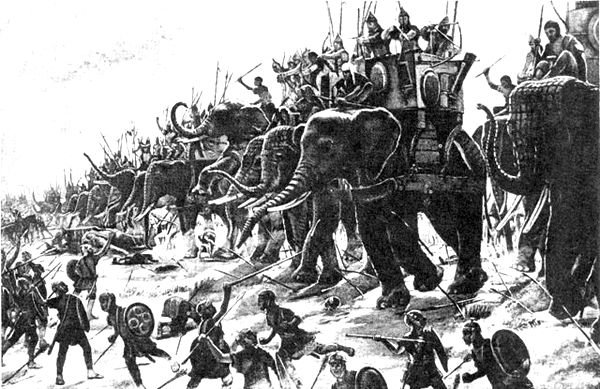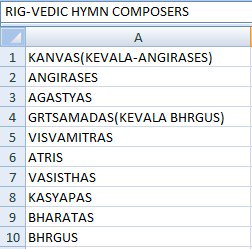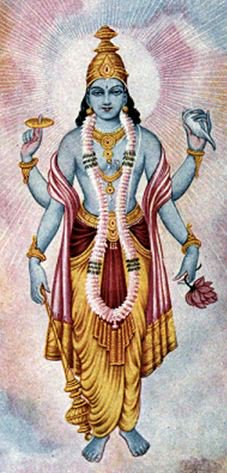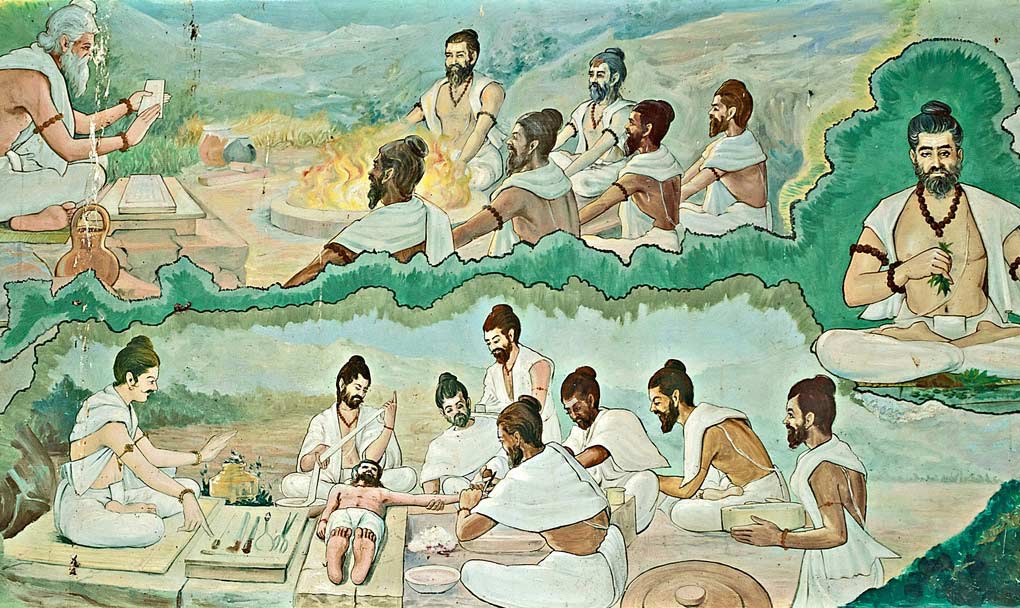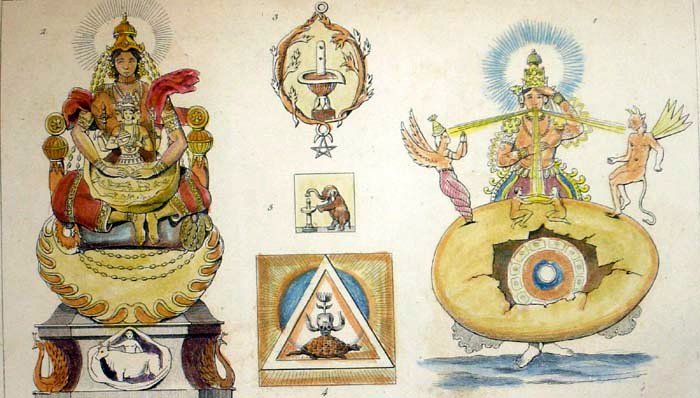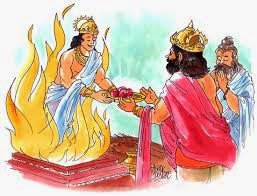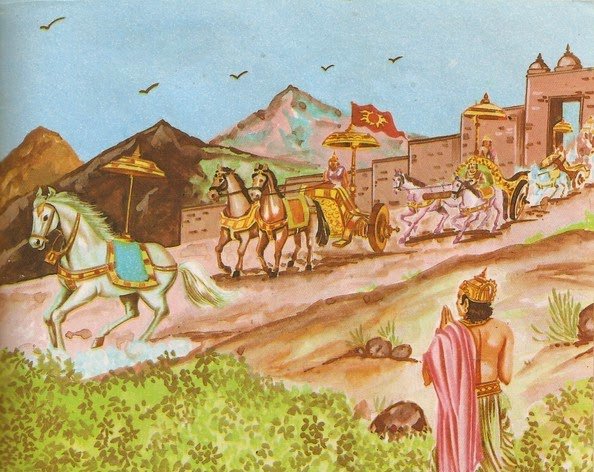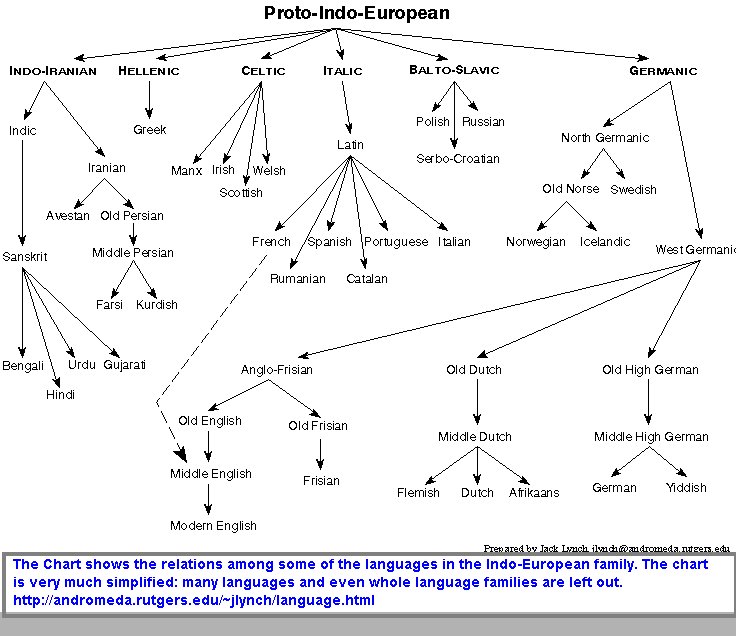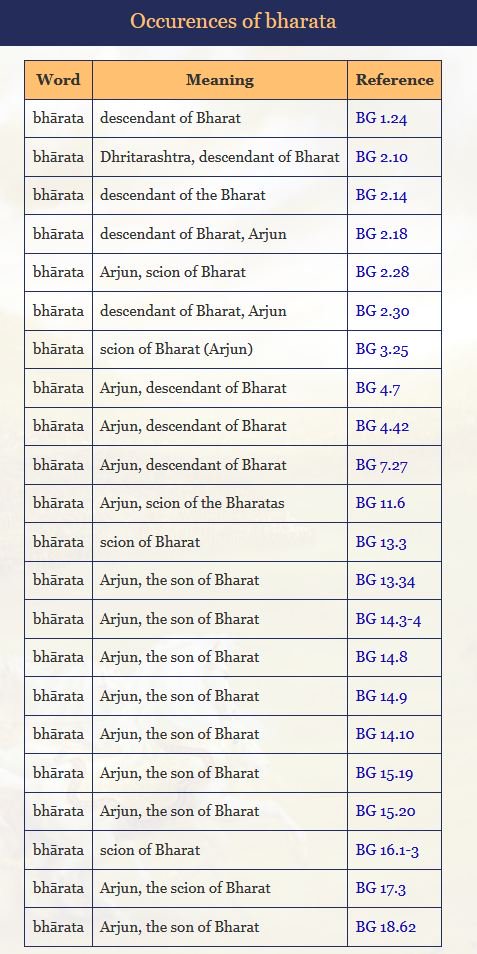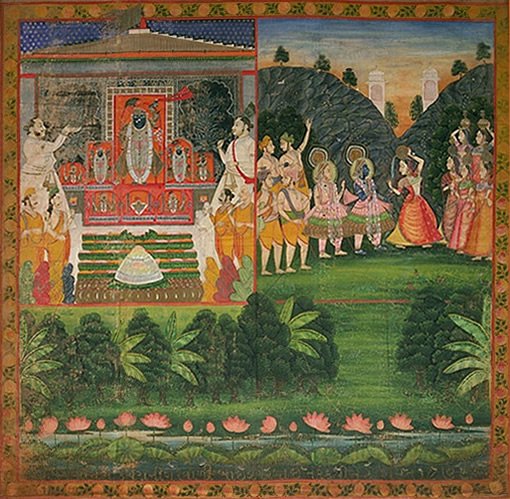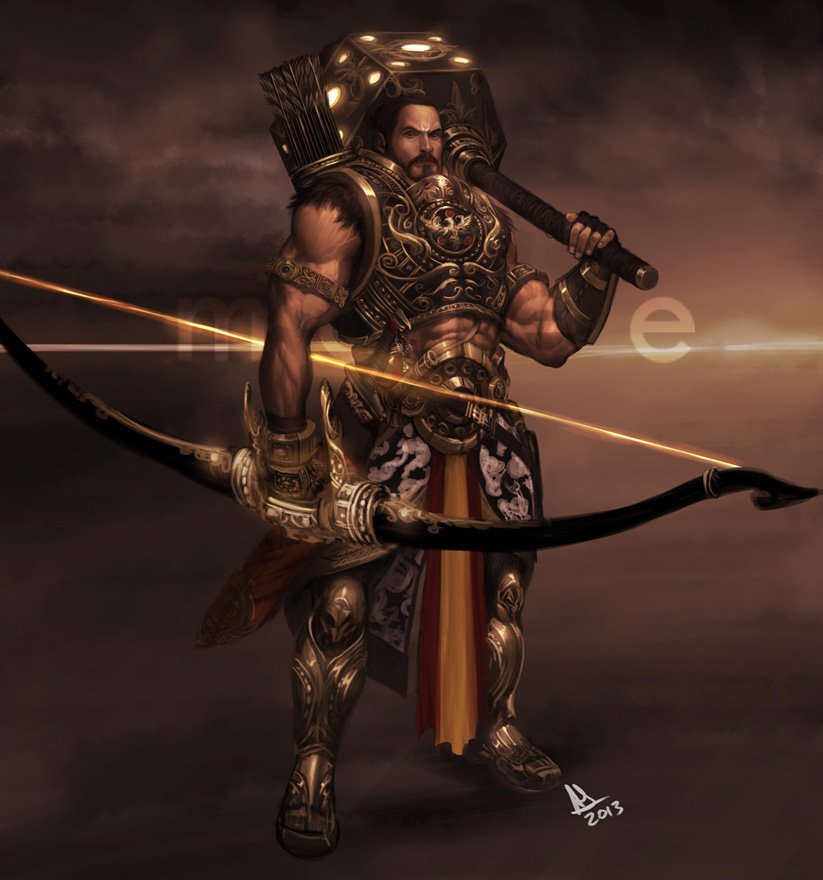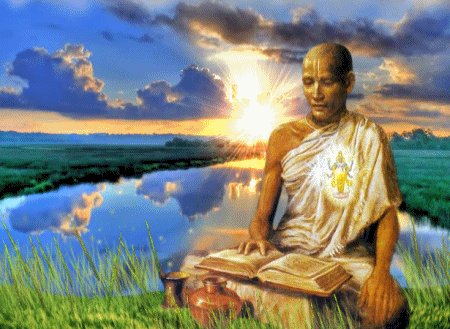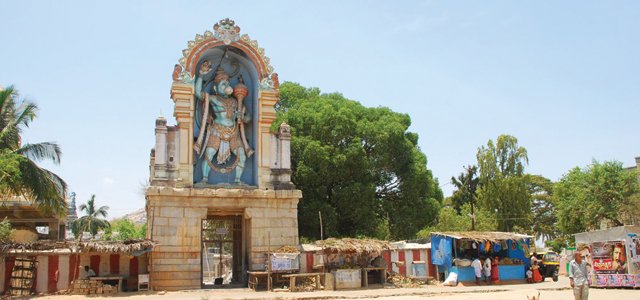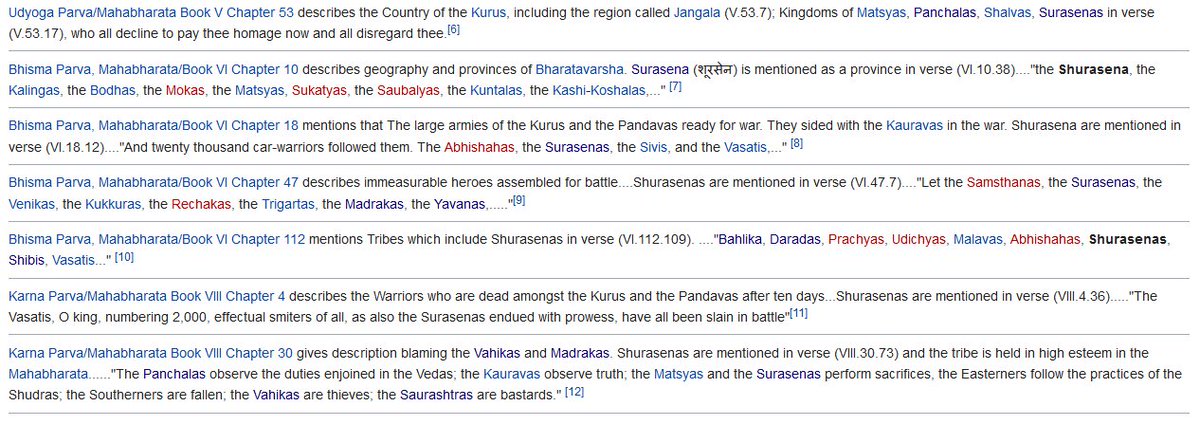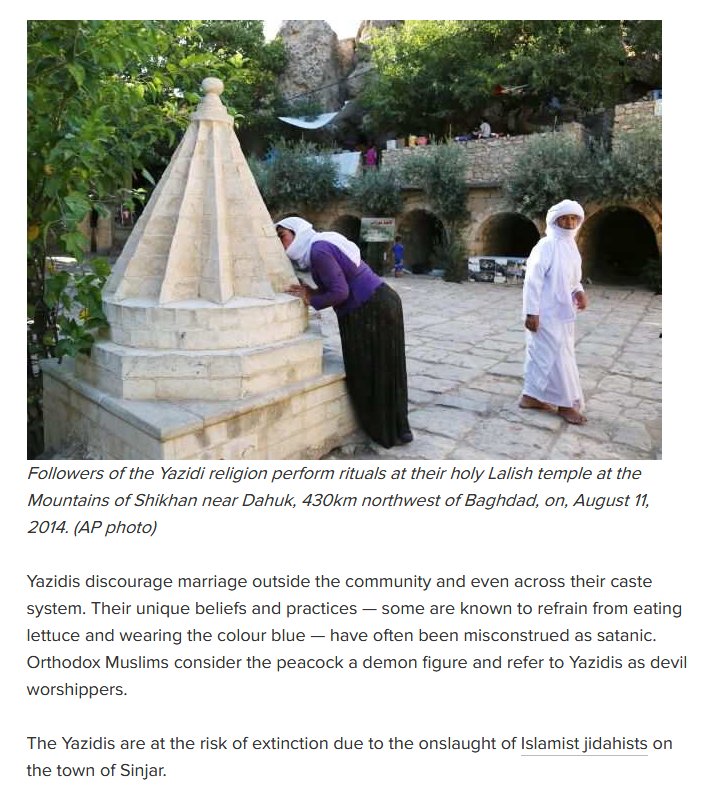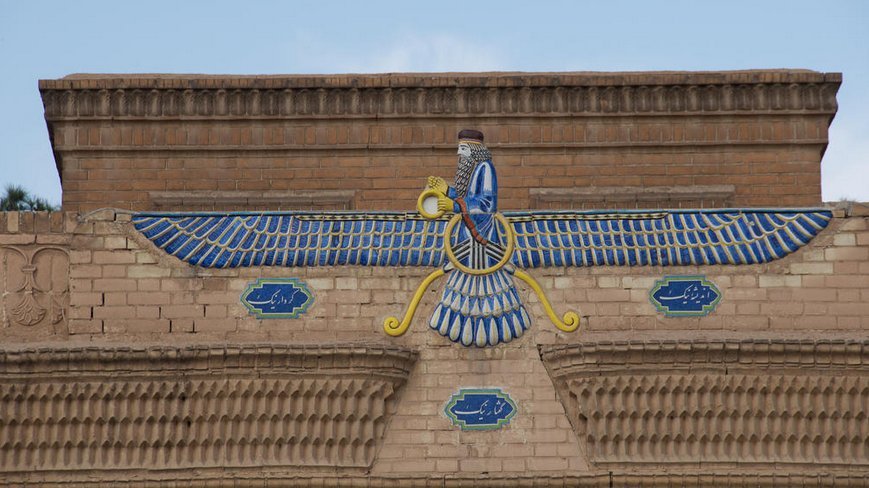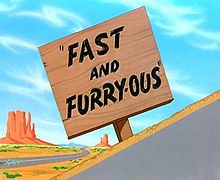All different races of Mankind are derived from Manu and Shradha. The current Manu is Vaivasvata Manu.
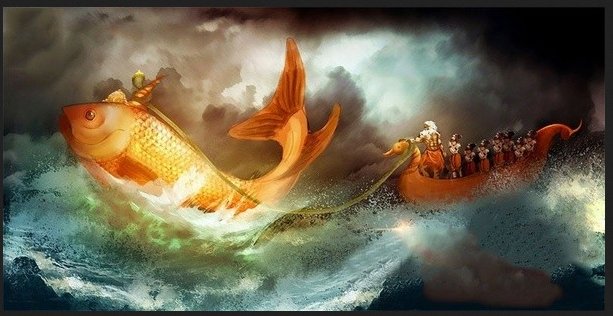
-Vena
-Dhrishnu
-Narishyan
-Nabhaga
-Ikshvaku
-Karusha
-Saryati
-Ila
-Prishadhru
-Nabhagarishta
Yayita had two wives Devayānī who was the daughter of Śukrācārya (Guru of the Asuras) and Śarmiṣṭhā (daughter of Asura king Vrishaparva).
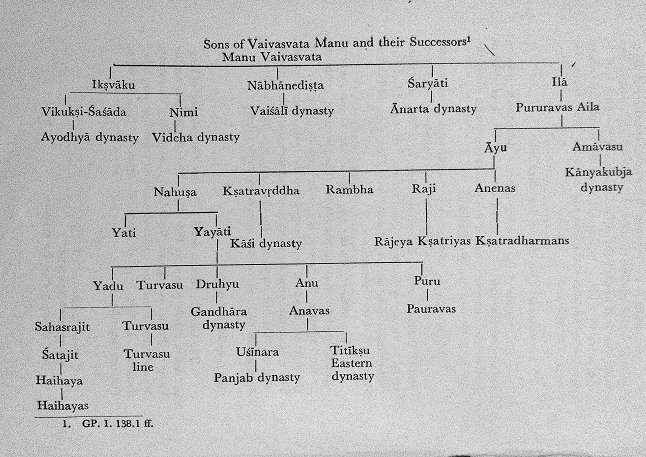
The Druhyu & their different sub-tribes are probably the ancestors of central Asian & Europeans. Druhyus migrated to central Asia; later Europe after being defeated in battle by a confederate of the rest of the tribes (Puru,ANu,Yadu,Turvasu). [Refer Talageri's book]
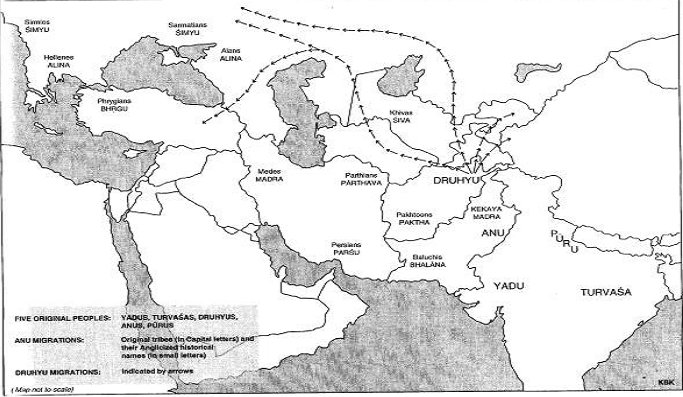
-Vayu Purana 99.11-12
-Brahmanda Purana III.74.11-12
-Matsya Purana 48.9
-Vishnu Purana IV.17.5
-Bhagavata Purana iX.23.14-16
Oh master of the universe, Vrishasena was Karna's son. From Druhyu there was a son called Babhru who next begot Setu.Ârabdha who was fathered by him, had the son Gândhâra who begot Dharma....(cont)
In Germanic (#gothic )- Druigan
Old #Norse (#Icelandic )-Drott
Old #English - Dryht
Old #German - truht
All means--- multitude, people, army.
They were the Proto-Iranians or can be said as the ancestors of the Iranians. As per the Puranas, the original geographical location of the Anu-s was to the north of the Pūru-s: i.e. to the north of the Haryana region: effectively in Kashmir and the western Himalayas.
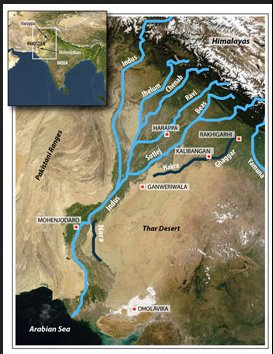
VII.18.6 Bhṛgu.
VII.18.7 thePaktha (Pakhtoons), Bhalāna (Baluchis), Alina, Śiva, Viṣāṇin.
VII.83.1 Parśu/Parśava(Persians),, Pṛthu/ Pārthava (Parthians), Dāsa.
Puranic Anus: Madra.
The Avesta (Vd. I) mentions the Haptahəndu (Saptasindhavah) as one of the sixteen #Iranian lands, past and contemporary.
In Avestan Vendidad 10.9 and 19.43, three divinities of the Vedic pantheon follow Angra Mainyu in a list of #demons :
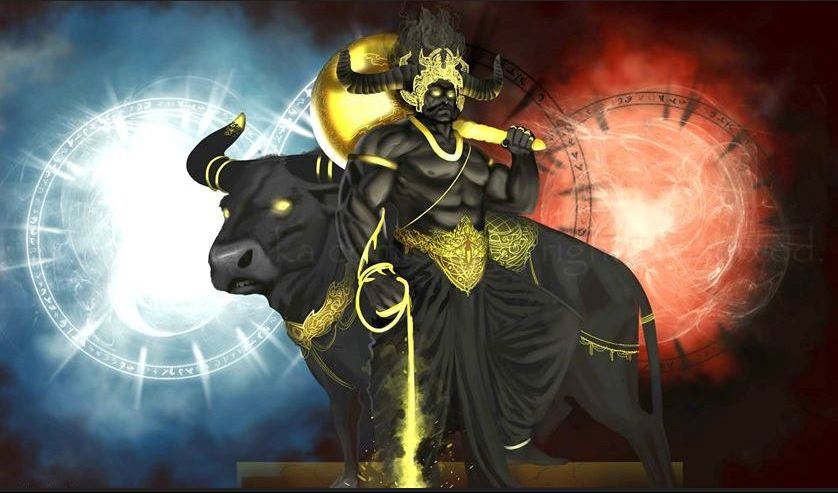
Bugaš (Possibly Sanskrit Bhaga)
Duniaš (Possibly the Vedic Danavas)
Indaš (Possibly Sanskrit Indra)
Kaššu (Possibly the Vedic Kashyapa and/or Kassapa Buddha)
Maruttaš, Muruttaš, Maraddaš (possibly the Vedic Maruts)
(cont.....)
Šuriaš (possibly the Vedic Surya)
And, one Kassite #king named Abhirattash (Vedic Abhiratha)
Mitanni deities
Varuna (Varuna)
Miitra (Mitra)
Indara (Indra)
Nasatya-nna (Nasatya)
Āgnis (Agni)
āśv-san-ni (Vedic Ashvasana) meaning master horse trainer
Aśva (Vedic ashva) meaning horse
Aika (Vedic eka) meaning one
Tera (Vedic tri) meaning three
Pańća (Vedic pancha) meaning five
Satta (Vedic sapta) meaning seven
(cont...)
Vartanna (Vedic Vartana) meaning round, turn
mani-nnu (Vedic maṇi) meaning bead/gemstone/ornament
papru-nnu (Vedic babhru) meaning brown
parita-nnu (Vedic palita) meaning gray
pinkara-nnu (Vedic piṅgala) meaning reddish brown
The common names consist of names having the following prefixes/suffixes: -aśva, -ratha, -sena, -bandhu, -uta, vasu-, ṛta-, priya-, and (as per the analysis of the Indologist P.E.Dumont), also bṛhad-, sapta-, abhi-, uru-, citra-, -kṣatra, yam/yami-:
Biridasva,Biriassuva, (assuva Sanskrit equivalent ashva)
Tusratta (ratta Sanskrit equivalent ratha)
Biriamasda (masda Sanskrit equivalent medha)
Biriasena (sena Sanskrit equivalent sena)
Indarota Yamiuta(ota/uta Sanskrit equivalent uta)
Wasdata WasKanni (Was Sanskrit equivalent Vasu)
Artamna Artatama(ṛta Sanskrit equivalent ṛta)
Biria Biriasura Biriasauma(Biria Sanskrit equivalent priya)
All these names types’ suffixes/prefixes and words are found only in the later part of the Rig Veda or some common words (very few like babhru, tri) found in older parts also, which are common in all the IE branches.
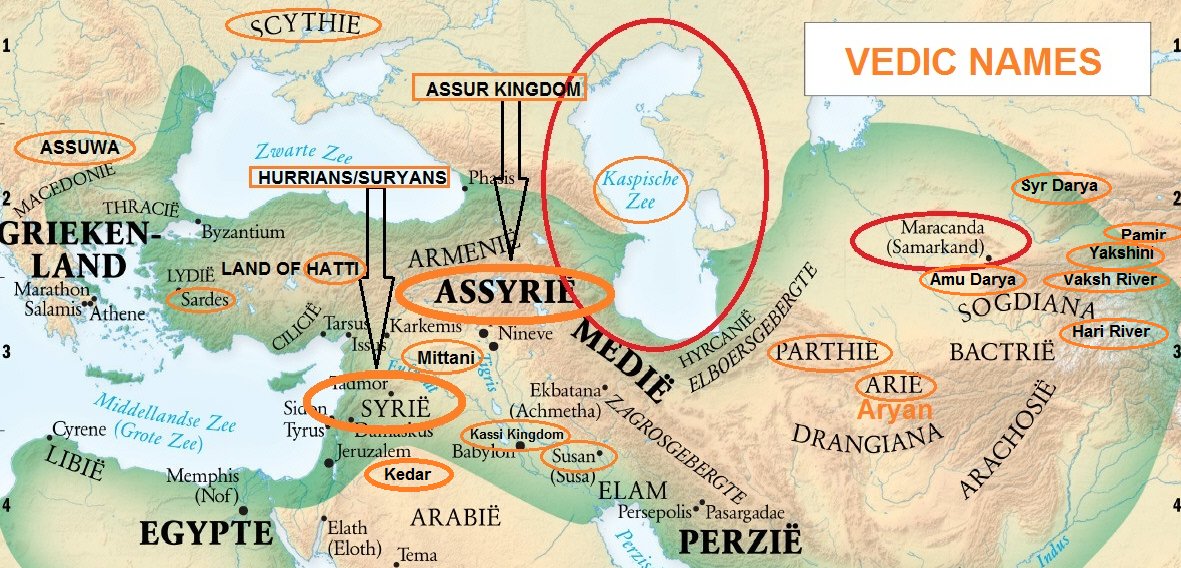
The first Mitanni king was Sutarna I (Sanskrit meaning “good sun”). Mitanni kings were named (who followed Sutarna-I) Paratarna I (Sanskritic meaning “great sun”), Parashukshatra (the Egyptian Parashurama, “ruler with axe”), ......cont
The “Amarna” letters showed there was a significant Indo- #Aryan connection between the #Mitannis and #Egyptians.
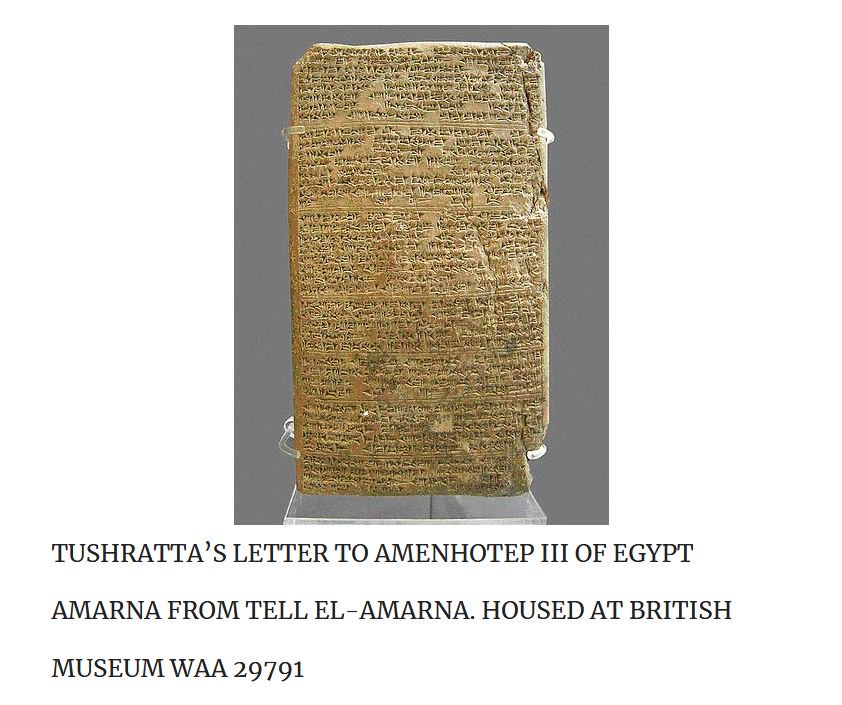
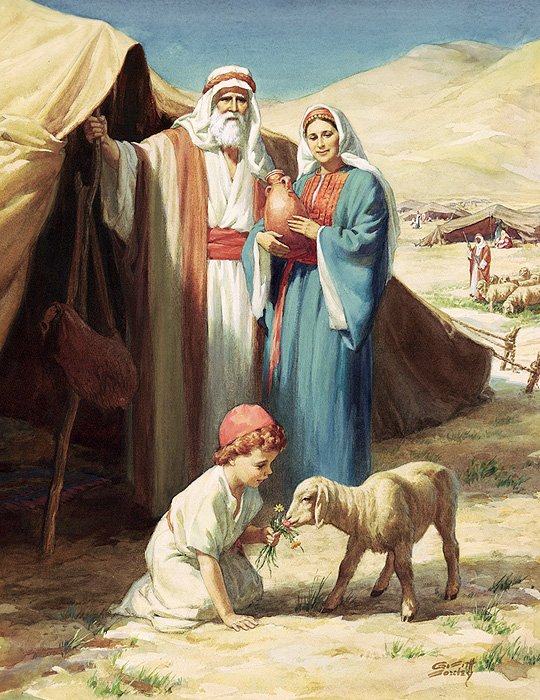
The Shasu of S'rr,
The Shasu of Rbn,
The Shasu of Sm't,
The Shasu of Wrbr,
The Shasu of Yhw,
The Shasu of Pysps.
A child born in the Bharata Purus racial lines without lust, Vedic initiation & garbhādhāna-saṁskāra were the Aryans.
